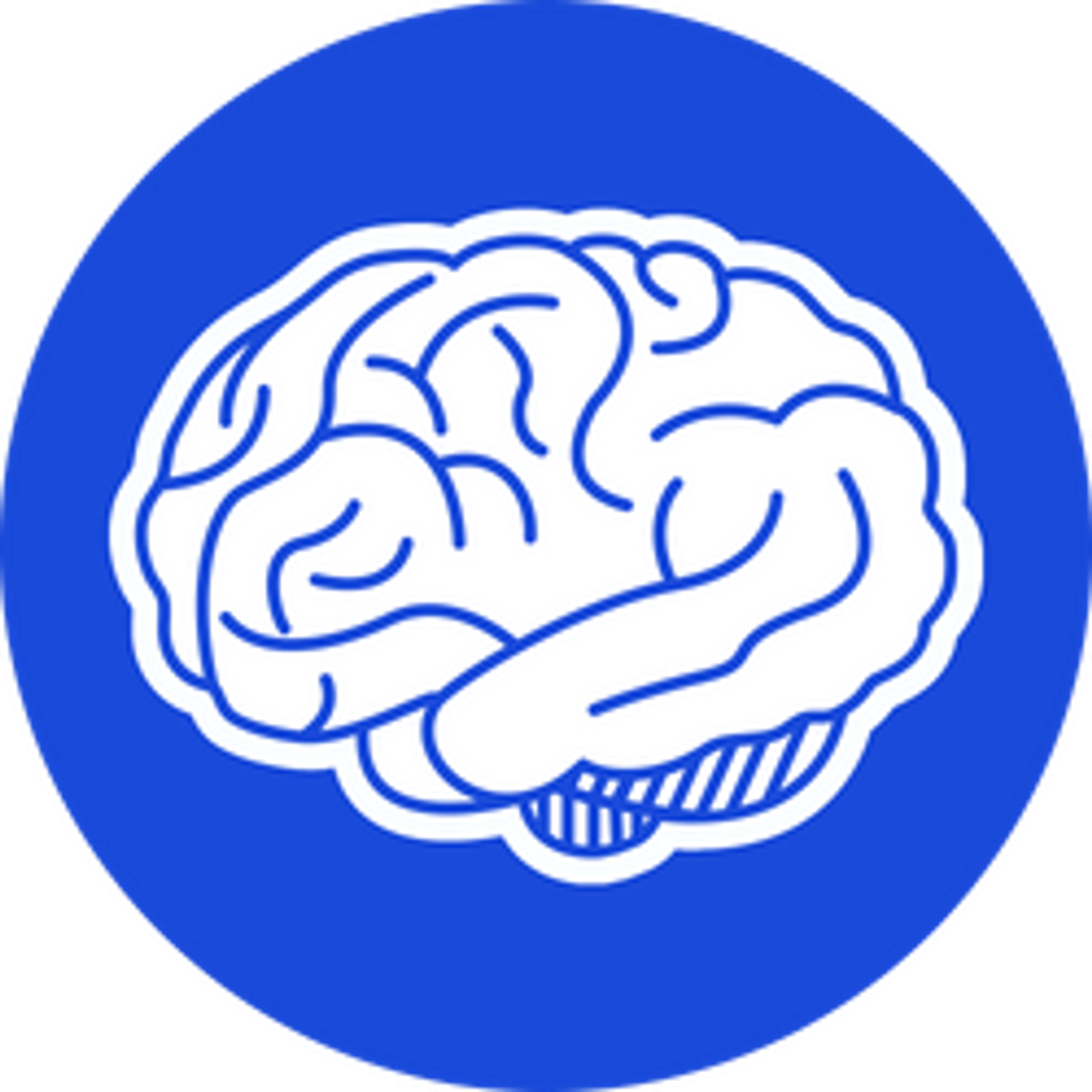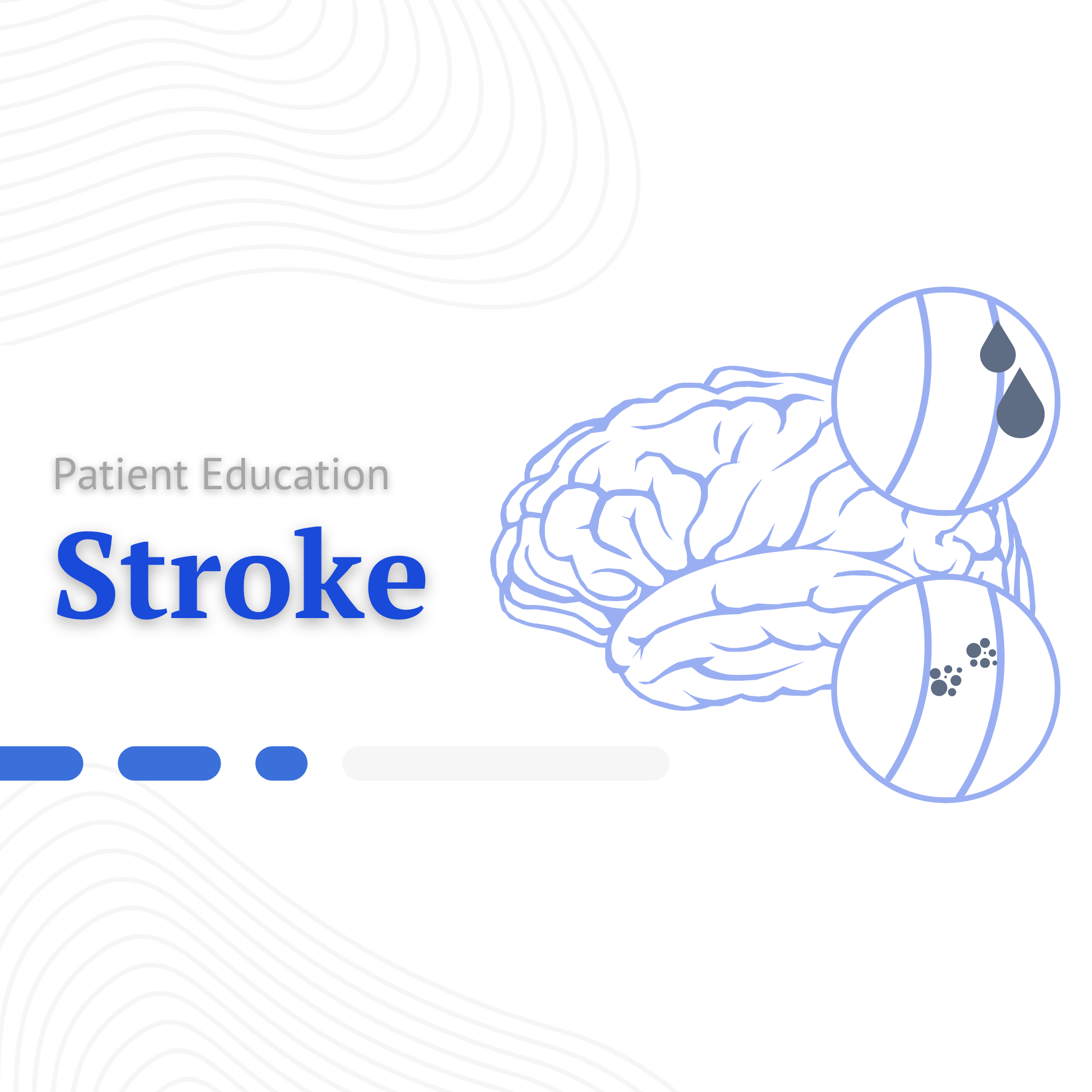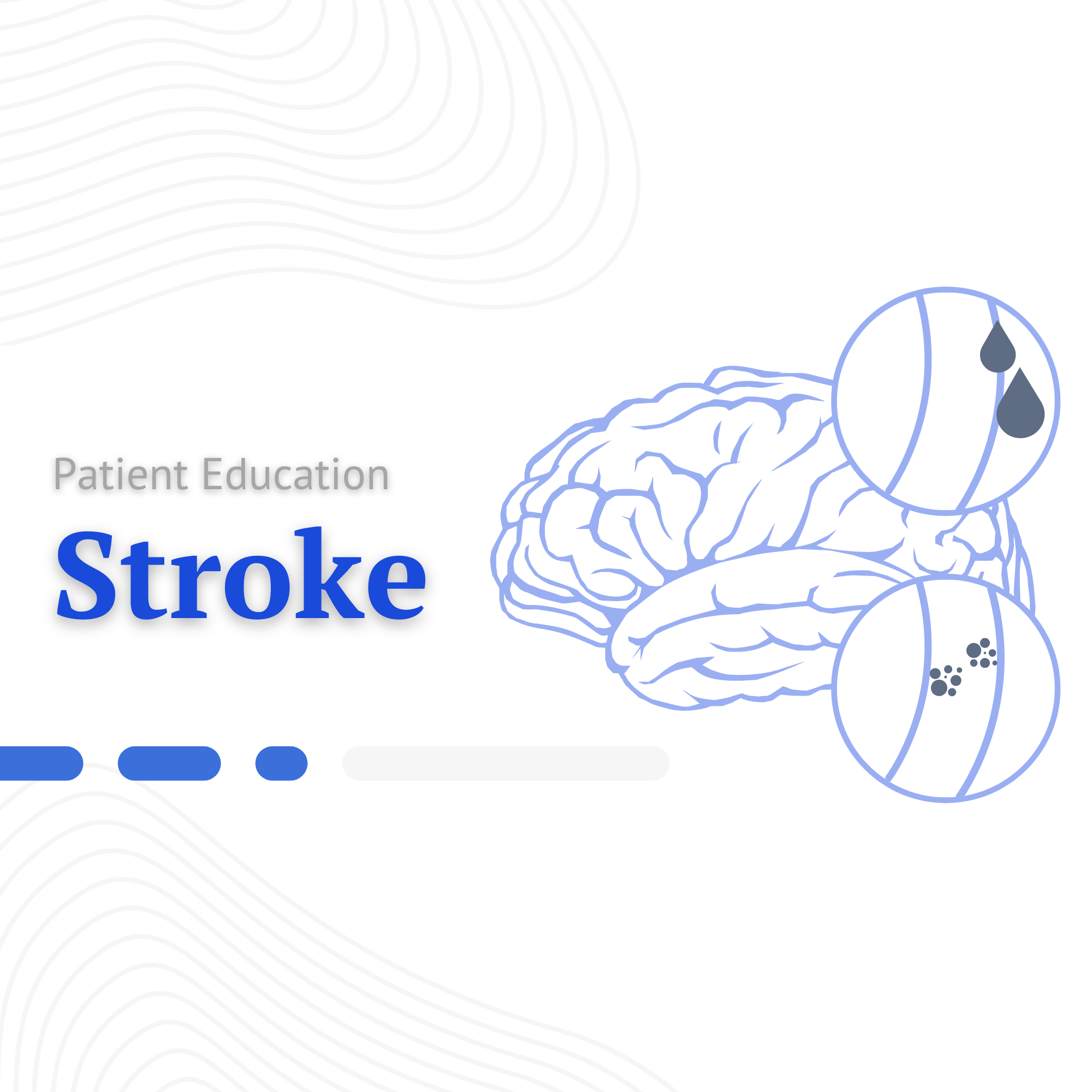Slug
stroke
Video
Category
Stroke
Excerpt
A stroke or "brain attack" occurs when a blood clot blocks an artery or a blood vessel breaks, interrupting blood flow to an area of the brain. When either of these things happen, brain cells begin to die and brain damage occurs.
Authors
Tags
Featured
Featured
Ready to Publish
Ready to Publish
Publish Date
Oct 5, 2022
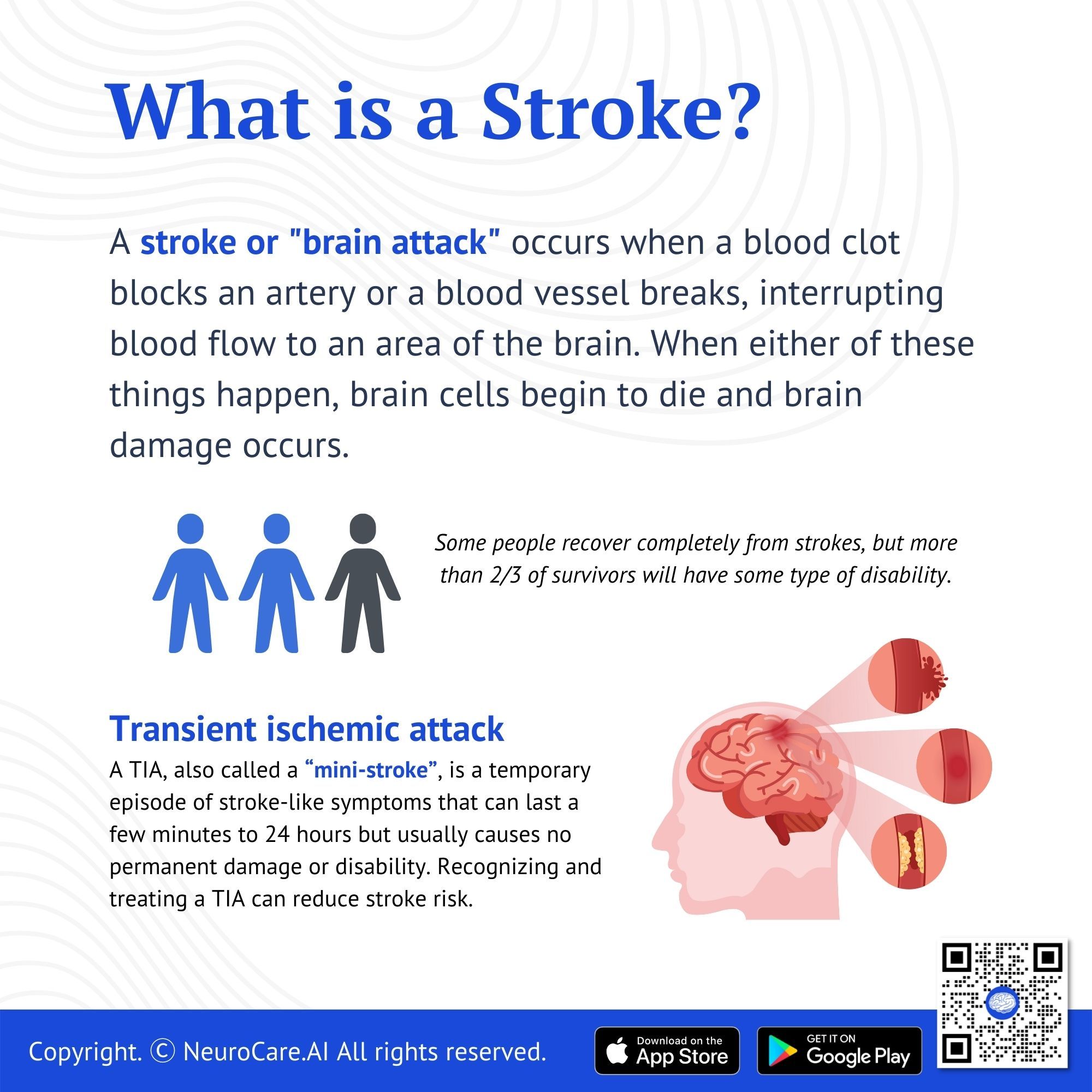
What is a stroke?
A stroke or "brain attack" occurs when a blood clot blocks an artery or a blood vessel breaks, interrupting blood flow to an area of the brain. When either of these things happen, brain cells begin to die and brain damage occurs.
Some people recover completely from strokes, but more than 2/3 of survivors will have some type of disability.
Transient ischemic attack
A TIA, also called a “mini-stroke”, is a temporary episode of stroke-like symptoms that can last a few minutes to 24 hours but usually causes no permanent damage or disability. Recognizing and treating a TIA can reduce stroke risk.
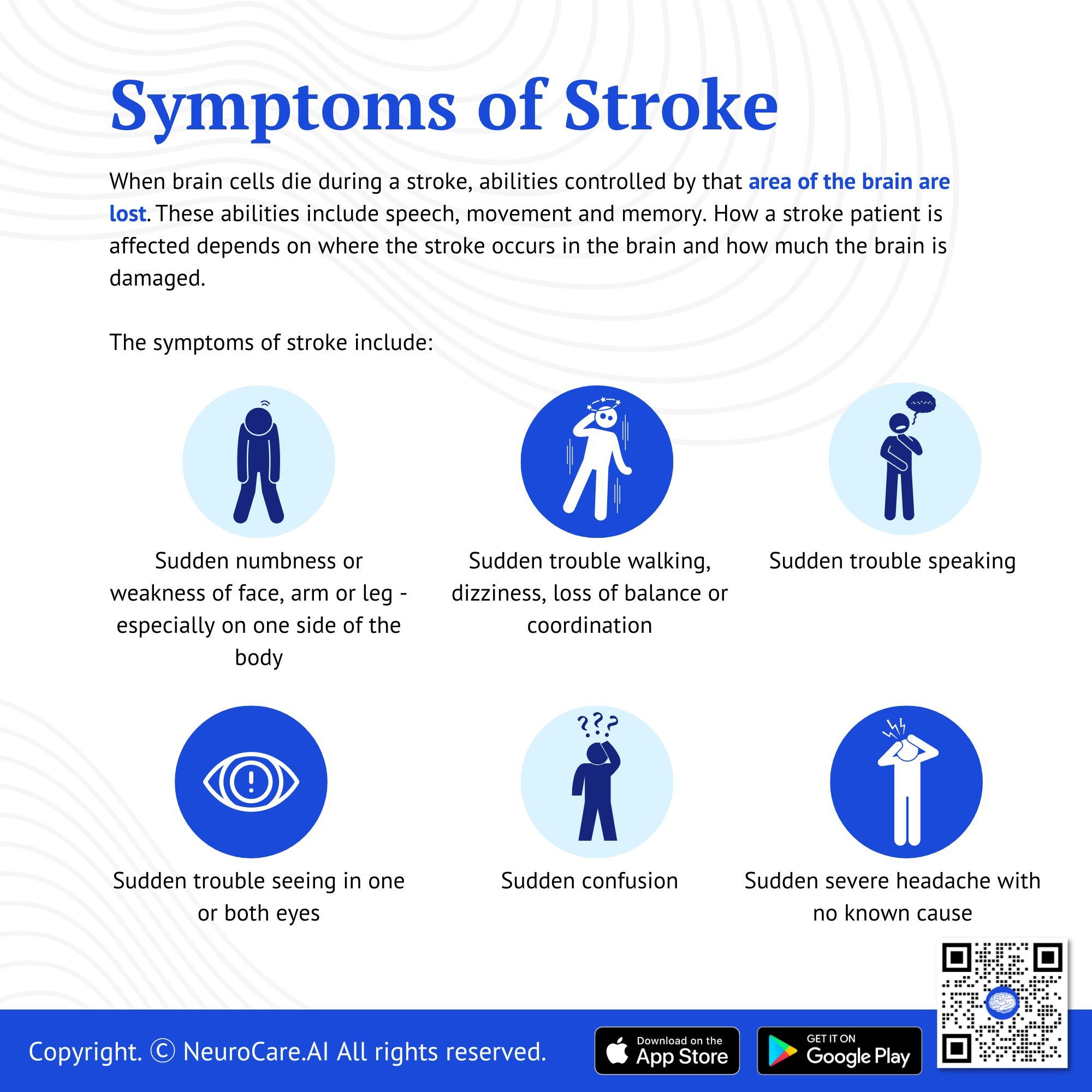
Symptoms of Stroke
When brain cells die during a stroke, abilities controlled by that area of the brain are lost. These abilities include speech, movement and memory. How a stroke patient is affected depends on where the stroke occurs in the brain and how much the brain is damaged.
The symptoms of stroke include:
- Sudden numbness or weakness of face, arm or leg - especially on one side of the body
- Sudden trouble speaking
- Sudden trouble walking, dizziness, loss of balance or coordination
- Sudden trouble seeing in one or both eyes
- Sudden confusion
- Sudden severe headache with no known cause.
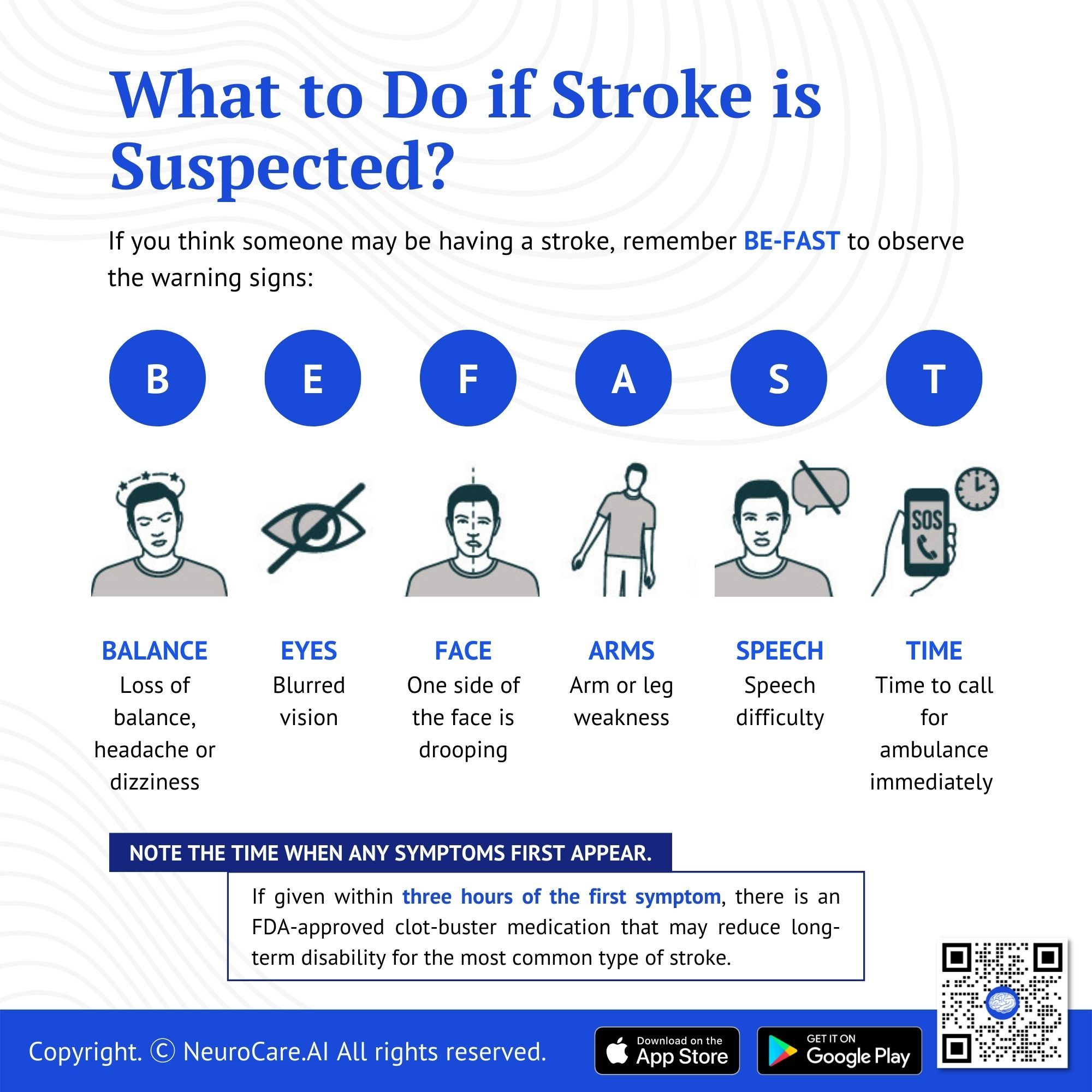
What to do if stroke is suspected?
If you think someone may be having a stroke, remember BE-FAST to observe the warning signs:
BE-FAST
Aspect | Assessment |
Balance | Ask the person to walk. Is the loss of balance observed? Is there a headache or dizziness? |
Eyes | Ask the person to read or recognize the person(s) around. Is there a blurring of vision? |
Face | Ask the person to smile. Does one side of the face droop? |
Arms | Ask the person to raise both arms. Does one arm drift downward? |
Speech | Ask the person to repeat a simple phrase. Is the speech slurred or strange? |
Time | If you observe any of these signs, call for ambulance immediately. |
NOTE THE TIME WHEN ANY SYMPTOMS FIRST APPEAR. If given within three hours of the first symptom, there is an FDA-approved clot-buster medication that may reduce long-term disability for the most common type of stroke.
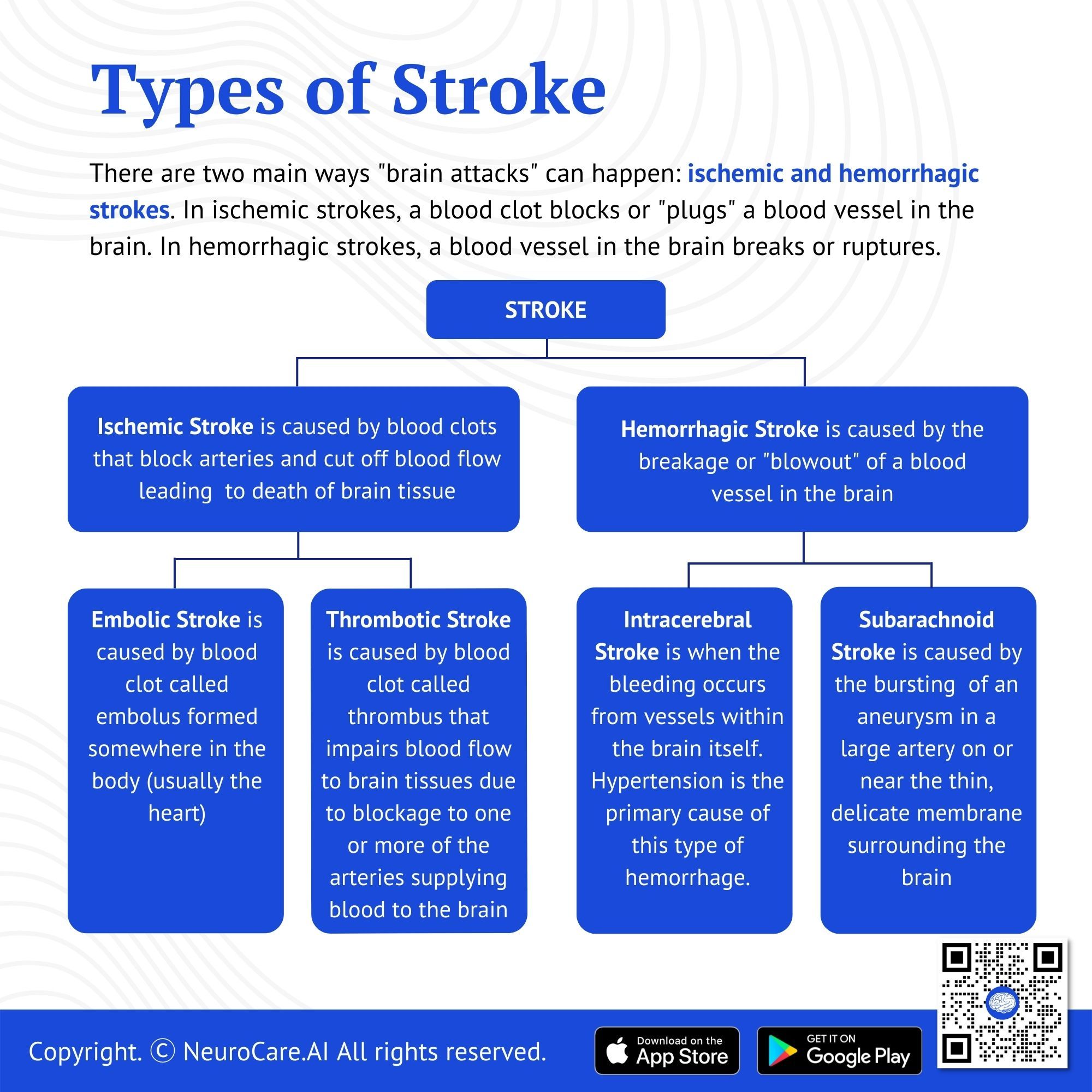
Types of stroke
There are two main ways "brain attacks" can happen: ischemic and hemorrhagic strokes. In ischemic strokes, a blood clot blocks or "plugs" a blood vessel in the brain. In hemorrhagic strokes, a blood vessel in the brain breaks or ruptures.
- Ischemic stroke: Blood clots are dangerous because they can block arteries and cut off blood flow, a process called ischemia. An ischemic stroke can occur in two ways: embolic and thrombotic strokes.
- Embolic stroke: In an embolic stroke, a blood clot called embolus forms somewhere in the body (usually the heart) and travels through the bloodstream to your brain. The clot lodges in the brain, blocking the blood vessel and causing a stroke.
- Thrombotic stroke: In this type of stroke, a blood clot called thrombus impairs blood flow to brain tissues due to blockage to one or more of the arteries supplying blood to the brain.
- Hemorrhagic stroke: It is a stroke caused by the breakage or "blowout" of a blood vessel in the brain. The medical word for this type of breakage is hemorrhage. Hemorrhages can be caused by a number of disorders which affect the blood vessels, including long-standing high blood pressure and cerebral aneurysms. There are two types of hemorrhagic stroke: subarachnoid and intracerebral.
- Intracerebral hemorrhage: The bleeding occurs from vessels within the brain itself. Hypertension is the primary cause of this type of hemorrhage.
- Subarachnoid hemorrhage: An aneurysm bursts in a large artery on or near the thin, delicate membrane surrounding the brain. Blood spills into the area around the brain which is filled with a protective fluid, causing the brain to be surrounded by blood-contaminated fluid.
Effects of stroke
The specific abilities that will be lost or affected by stroke depend on the extent of the brain damage and most importantly where in the brain the stroke occurred. The brain is divided into four primary parts: the right hemisphere (or half), the left hemisphere, the cerebellum and the brain stem.
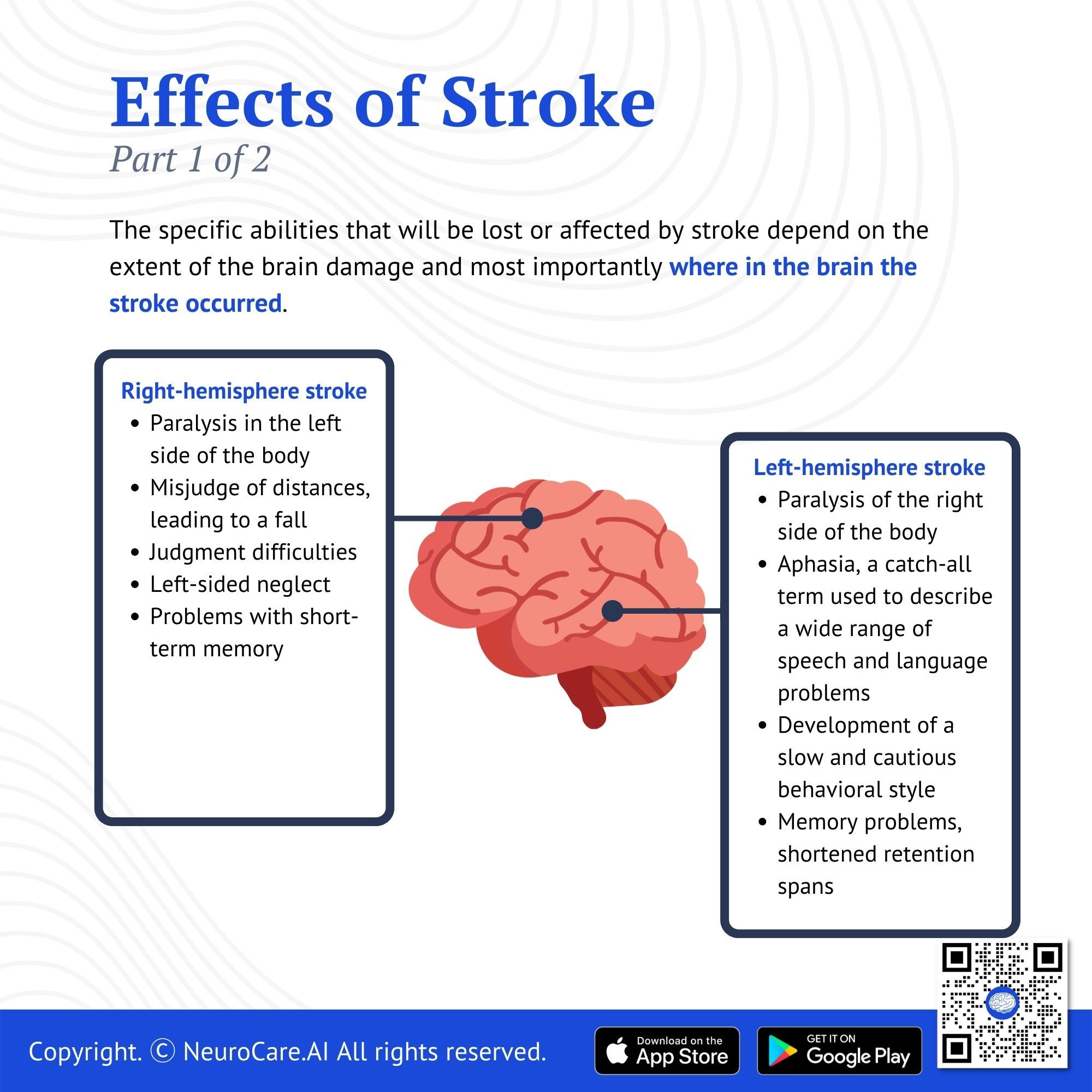
Right-hemisphere stroke:
A stroke in the right hemisphere often causes the following:
- Paralysis in the left side of the body (left hemiplegia)
- Misjudge of distances, leading to a fall or be unable to guide their hands to pick up an object, button a shirt or tie their shoes
- Judgment difficulties, development of an impulsive style unaware of impairments
- Left-sided neglect, tendency to “forget" or "ignore" objects or people on their left side
- Problems with short-term memory
Left-hemisphere stroke:
A left-hemisphere stroke often causes the following:
- Paralysis of the right side of the body (right hemiplegia)
- Aphasia, a catch-all term used to describe a wide range of speech and language problems
- Development of a slow and cautious behavioral style; they may need frequent instruction and feedback to complete tasks
- Memory problems, shortened retention spans, difficulty in learning new information and problems in conceptualizing and generalizing
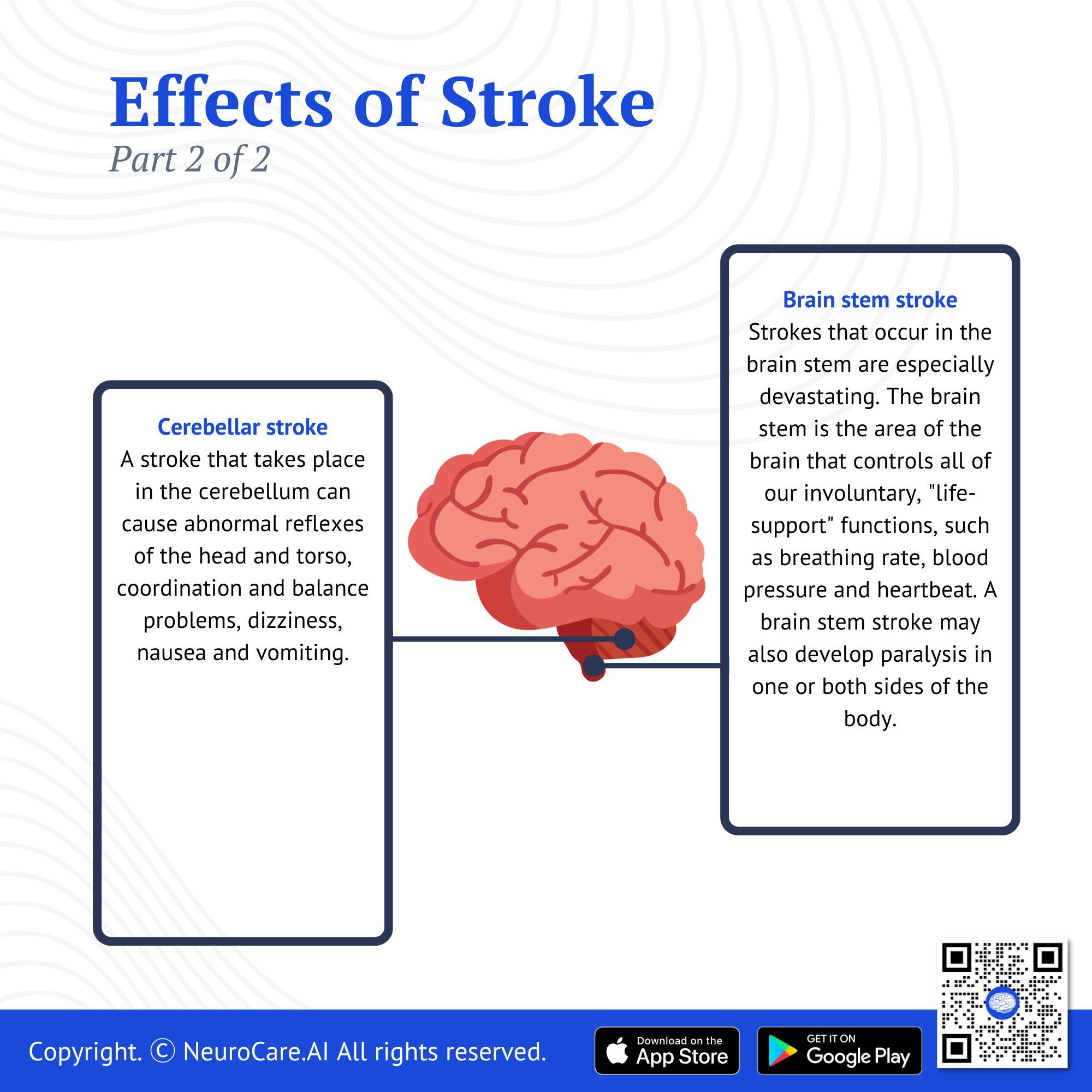
Cerebellar stroke: A stroke that takes place in the cerebellum can cause abnormal reflexes of the head and torso, coordination and balance problems, dizziness, nausea and vomiting.
Brain stem stroke: Strokes that occur in the brain stem are especially devastating. The brain stem is the area of the brain that controls all of our involuntary, "life-support" functions, such as breathing rate, blood pressure and heartbeat. A brain stem stroke may also develop paralysis in one or both sides of the body.
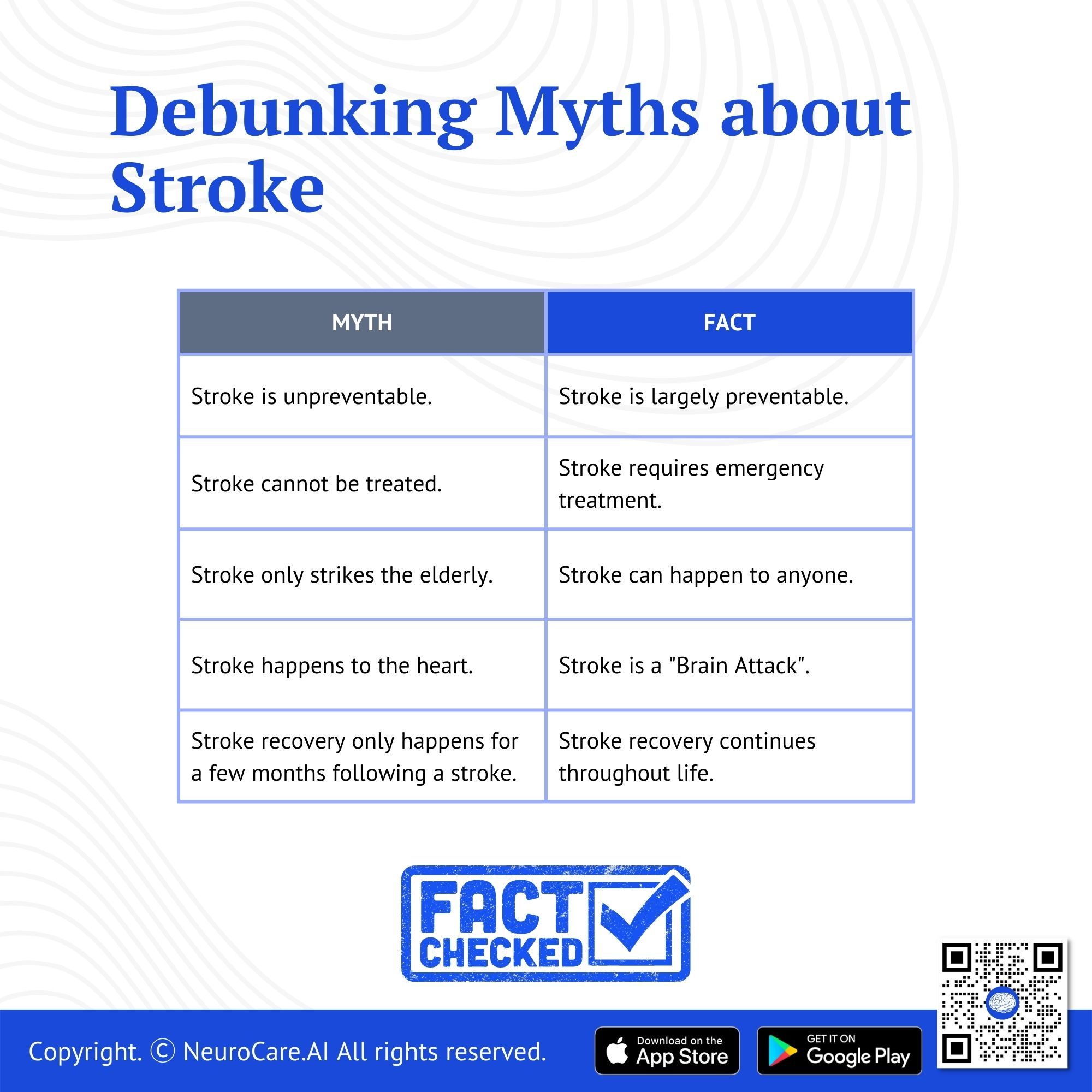
Debunking Myths about Stroke
Myth | Fact |
Stroke is unpreventable. | Stroke is largely preventable. |
Stroke cannot be treated. | Stroke requires emergency treatment. |
Stroke only strikes the elderly. | Stroke can happen to anyone. |
Stroke happens to the heart. | Stroke is a "Brain Attack". |
Stroke recovery only happens for a few months following a stroke. | Stroke recovery continues throughout life. |
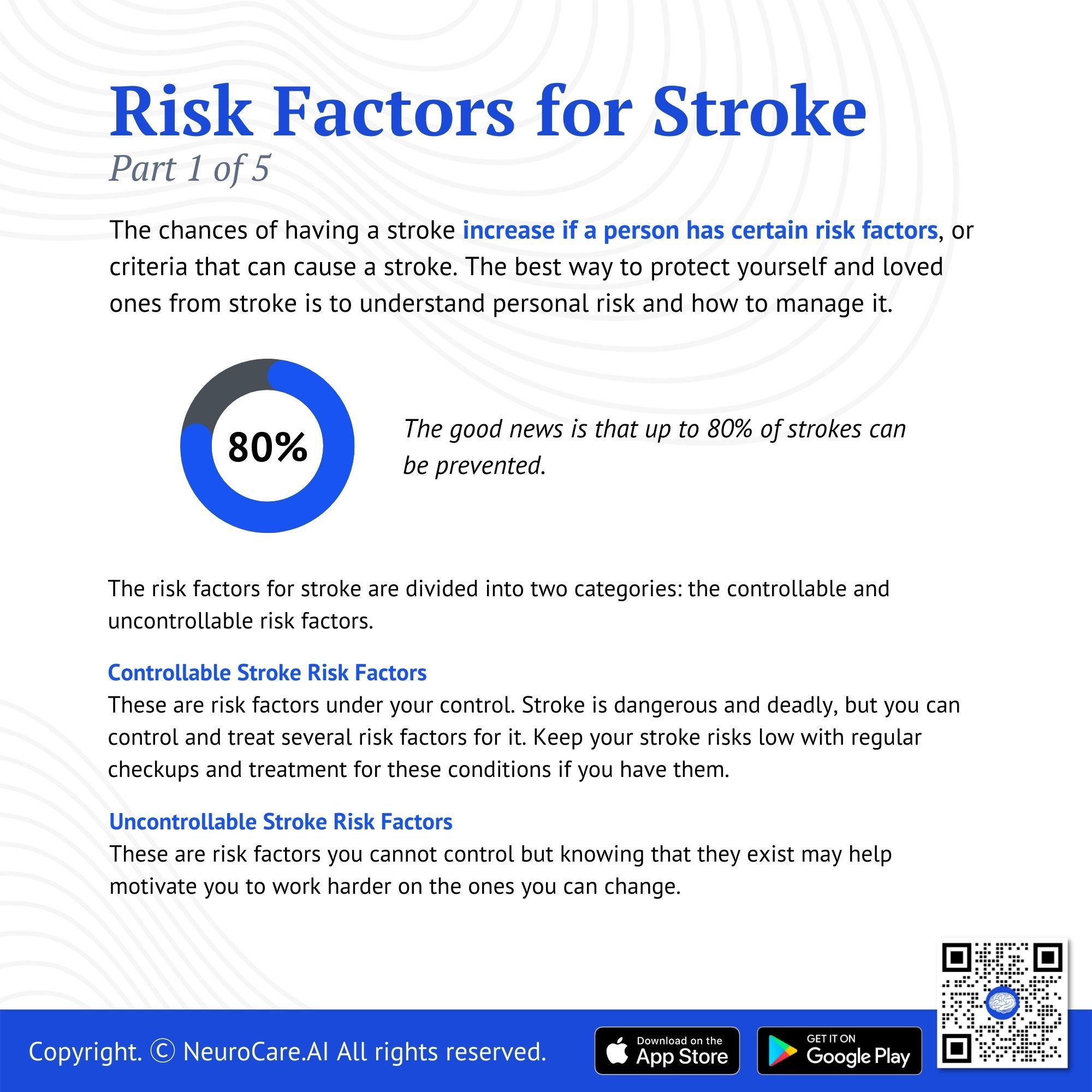
Risk Factors for Stroke
The chances of having a stroke increase if a person has certain risk factors, or criteria that can cause a stroke. The good news is that up to 80% of strokes can be prevented, and the best way to protect yourself and loved ones from stroke is to understand personal risk and how to manage it.
The risk factors for stroke are divided into two categories: the controllable and uncontrollable risk factors.
Controllable Stroke Risk Factors. These are risk factors under your control. Stroke is dangerous and deadly, but you can control and treat several risk factors for it. Keep your stroke risks low with regular checkups and treatment for these conditions if you have them.
Uncontrollable Stroke Risk Factors. These are risk factors you cannot control but knowing that they exist may help motivate you to work harder on the ones you can change.
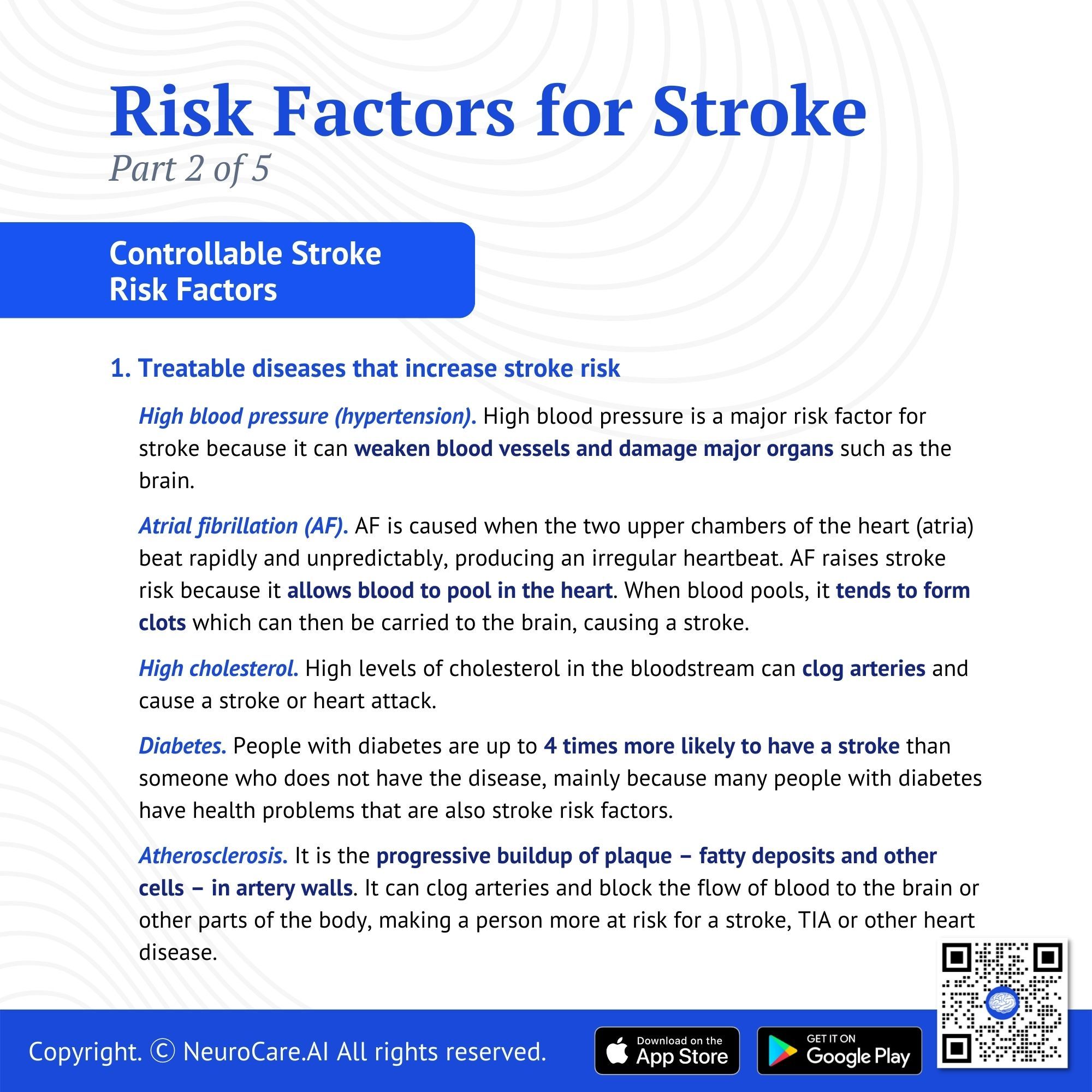
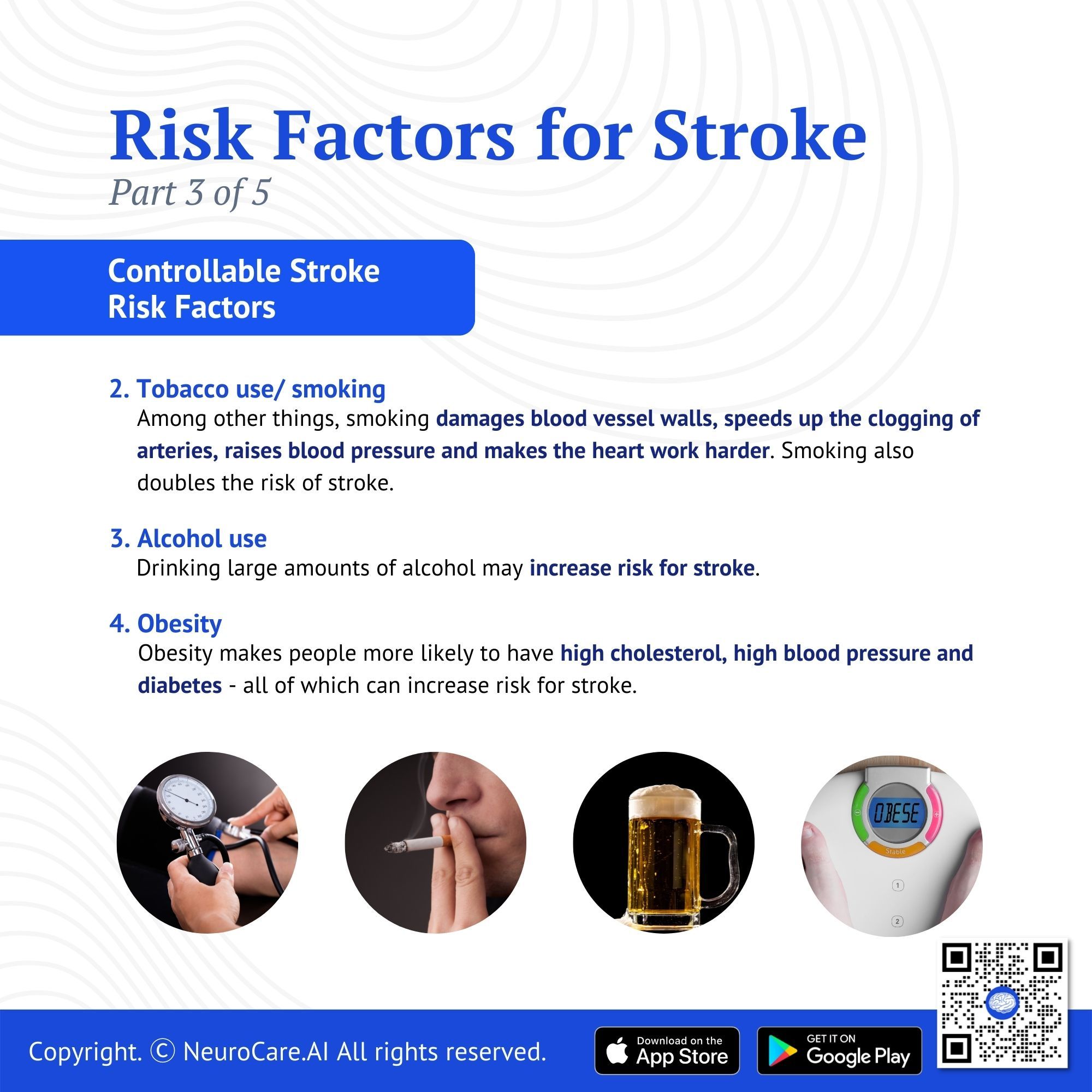
Controllable stroke risk factors
- Treatable diseases that increase stroke risk:
- High blood pressure (hypertension): High blood pressure is a major risk factor for stroke because it can weaken blood vessels and damage major organs such as the brain.
- Atrial fibrillation (AF): AF is caused when the two upper chambers of the heart (atria) beat rapidly and unpredictably, producing an irregular heartbeat. AF raises stroke risk because it allows blood to pool in the heart. When blood pools, it tends to form clots which can then be carried to the brain, causing a stroke.
- High cholesterol: High levels of cholesterol in the bloodstream can clog arteries and cause a stroke or heart attack.
- Diabetes: People with diabetes are up to 4 times more likely to have a stroke than someone who does not have the disease, mainly because many people with diabetes have health problems that are also stroke risk factors.
- Atherosclerosis: Atherosclerosis is the progressive buildup of plaque – fatty deposits and other cells – in artery walls. It can clog arteries and block the flow of blood to the brain or other parts of the body, making a person more at risk for a stroke, TIA or other heart disease.
- Tobacco use/ smoking: Among other things, smoking damages blood vessel walls, speeds up the clogging of arteries, raises blood pressure and makes the heart work harder. Smoking also doubles the risk of stroke.
- Alcohol use: Drinking large amounts of alcohol may increase risk for stroke.
- Obesity: Obesity makes people more likely to have high cholesterol, high blood pressure and diabetes - all of which can increase risk for stroke.
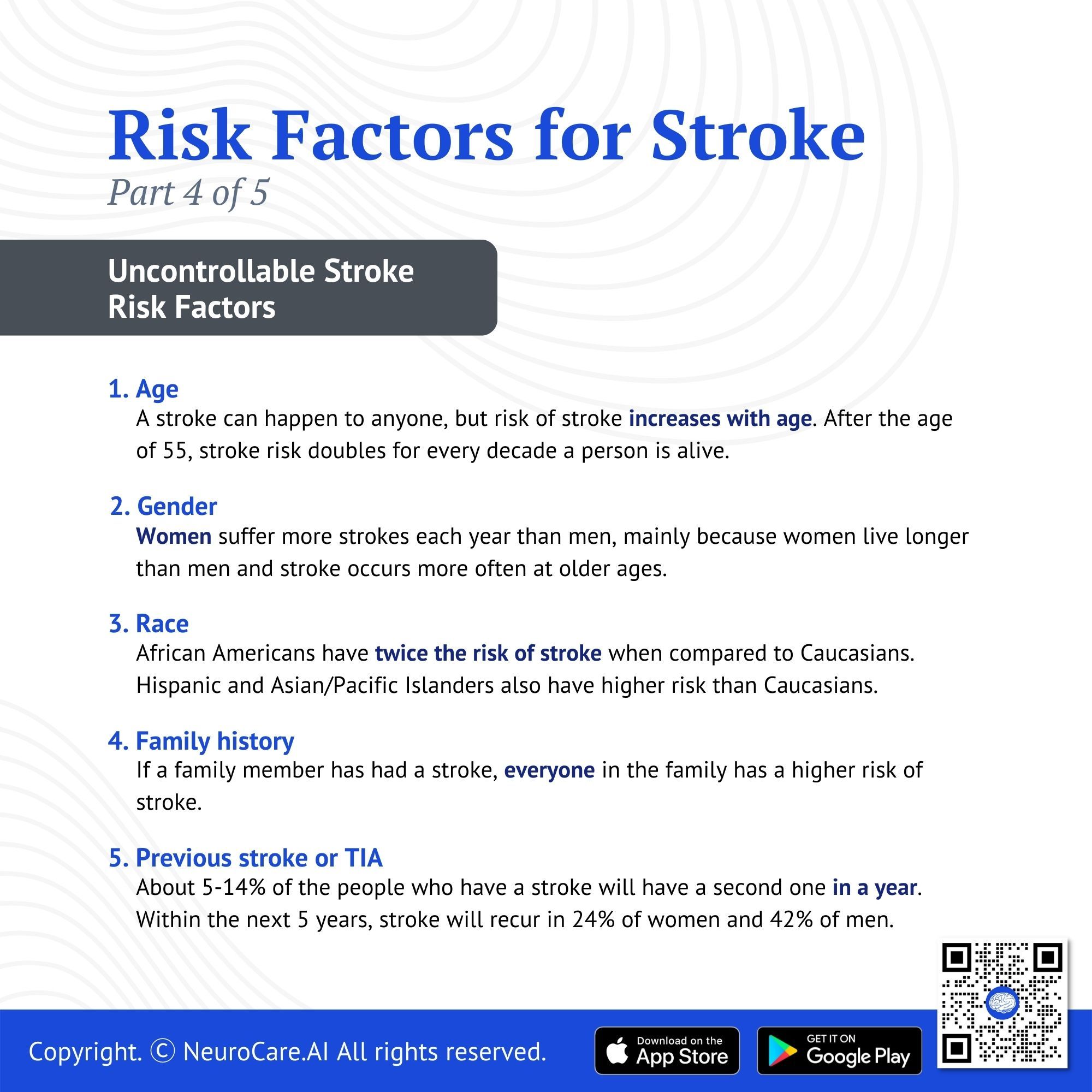
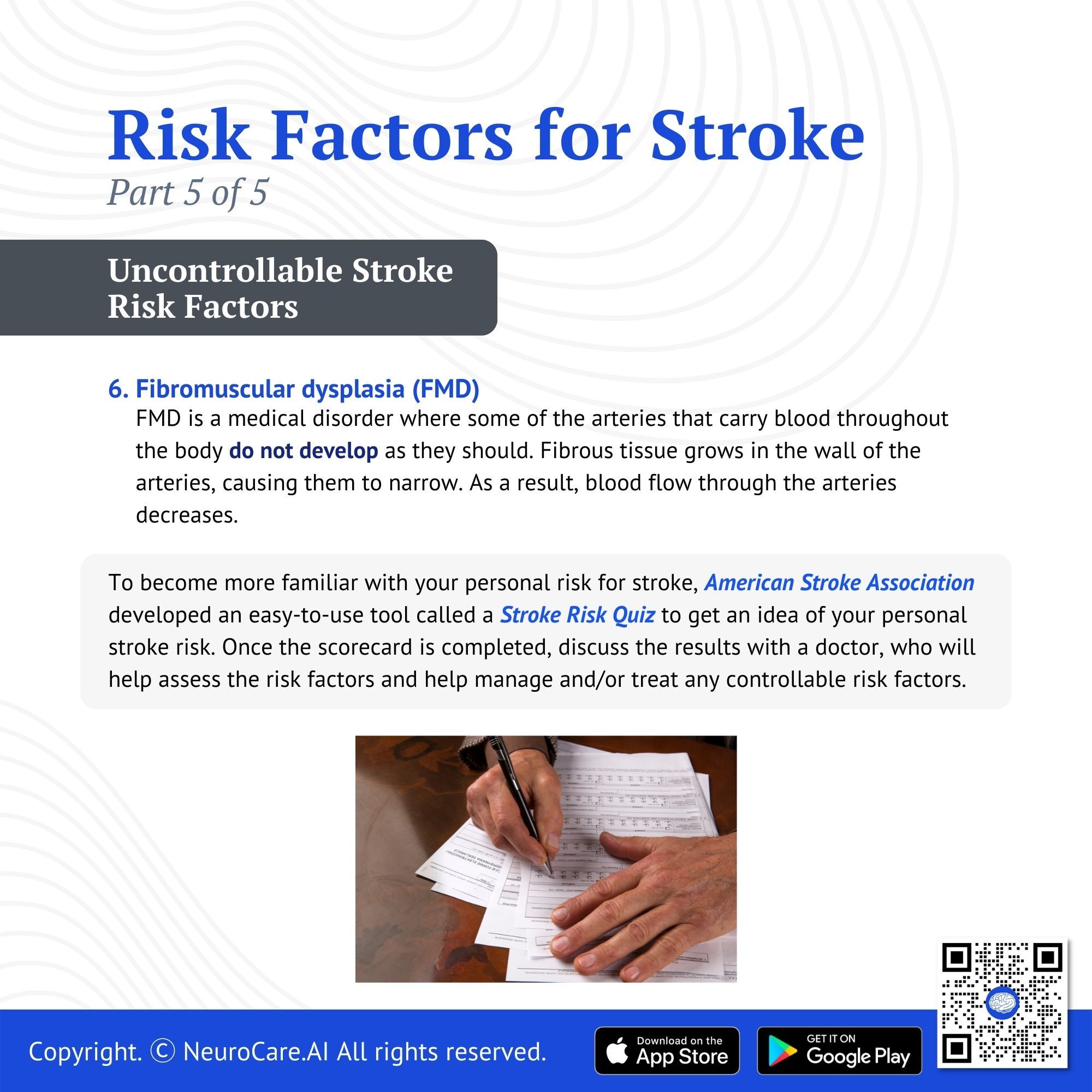
Uncontrollable stroke risk factors
- Age: A stroke can happen to anyone, but risk of stroke increases with age. After the age of 55, stroke risk doubles for every decade a person is alive.
- Gender: Women suffer more strokes each year than men, mainly because women live longer than men and stroke occurs more often at older ages.
- Race: African Americans have twice the risk of stroke when compared to Caucasians. Hispanic and Asian/Pacific Islanders also have higher risk than Caucasians.
- Family history: If a family member has had a stroke, everyone in the family has a higher risk of stroke.
- Previous stroke or TIA: Up to 40 percent of people who experience a TIA may have a stroke. Within the next 5 years, stroke will recur in 24% of women and 42% of men.
- Fibromuscular dysplasia (FMD): FMD is a medical disorder where some of the arteries that carry blood throughout the body do not develop as they should. Fibrous tissue grows in the wall of the arteries, causing them to narrow. As a result, blood flow through the arteries decreases.
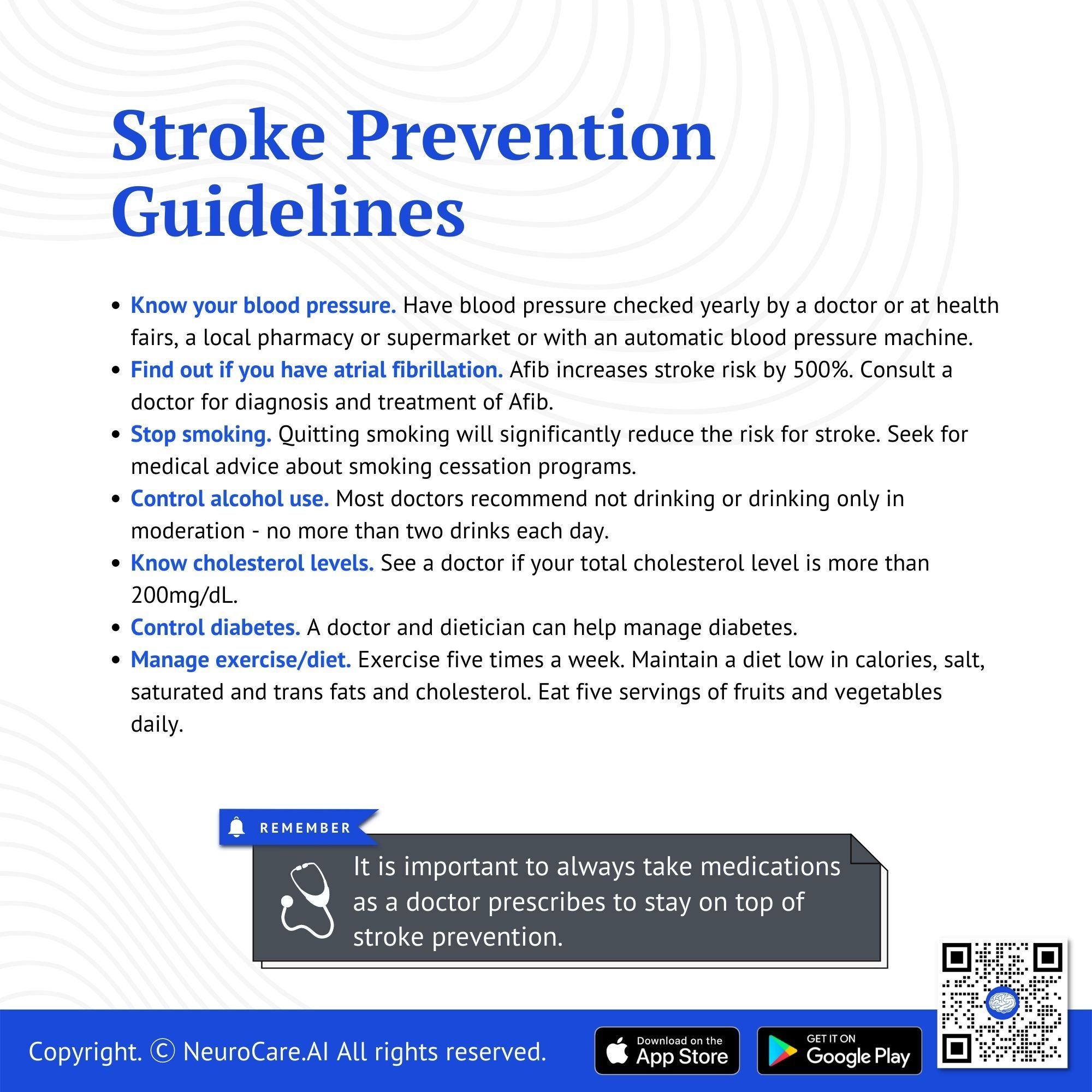
Stroke prevention guidelines
To become more familiar with your personal risk for stroke, American Stroke Association developed an easy-to-use tool called a Stroke Risk Quiz to get an idea of your personal stroke risk. Once the scorecard is completed, discuss the results with a doctor, who will help assess the risk factors and help manage and/or treat any controllable risk factors. Remember: It is important to always take medications as a doctor prescribes to stay on top of stroke prevention.
Know your blood pressure. Have blood pressure checked yearly by a doctor or at health fairs, a local pharmacy or supermarket or with an automatic blood pressure machine.
Find out if you have atrial fibrillation. Afib increases stroke risk by 500%. Consult a doctor for diagnosis and treatment of Afib.
Stop smoking. Quitting smoking will significantly reduce the risk for stroke. Seek for medical advice about smoking cessation programs.
Control alcohol use. Most doctors recommend not drinking or drinking only in moderation - no more than two drinks each day.
Know cholesterol levels. See a doctor if your total cholesterol level is more than 200mg/dL.
Control diabetes. A doctor and dietician can help manage diabetes.
Manage exercise/diet. Exercise five times a week. Maintain a diet low in calories, salt, saturated and trans fats and cholesterol. Eat five servings of fruits and vegetables daily.
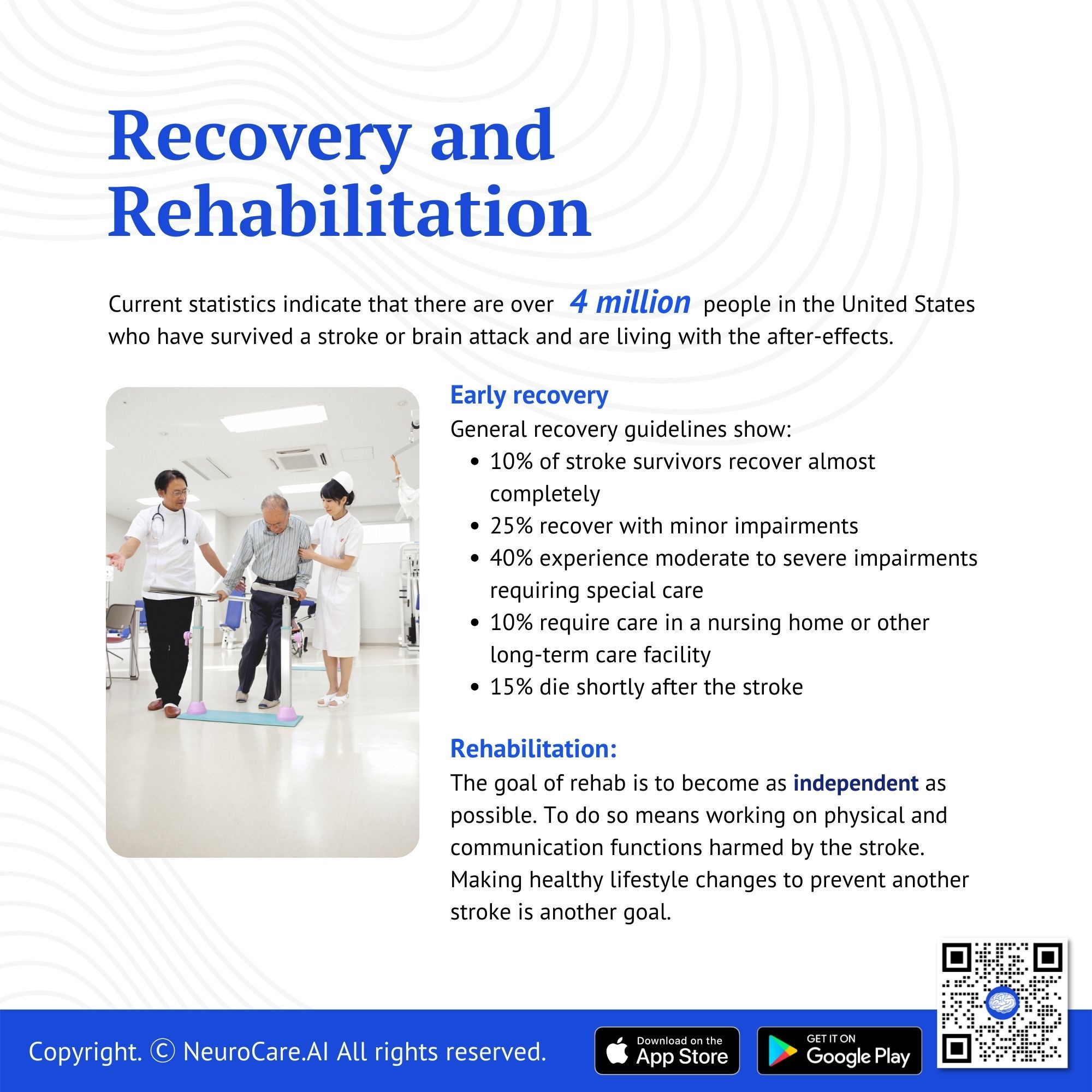
Recovery & rehabilitation
Current statistics indicate that there are over 4 million people in the United States who have survived a stroke or brain attack and are living with the after-effects. These numbers do not reflect the scope of the problem and do not count the millions of husbands, wives and children who live with and care for stroke survivors and who are, because of their own altered lifestyle, greatly affected by stroke.
Early recovery: General recovery guidelines show:
- 10 percent of stroke survivors recover almost completely
- 25 percent recover with minor impairments
- 40 percent experience moderate to severe impairments requiring special care
- 10 percent require care in a nursing home or other long-term care facility
- 15 percent die shortly after the stroke
Rehabilitation:
The goal of rehab is to become as independent as possible. To do so means working on physical and communication functions harmed by the stroke. Making healthy lifestyle changes to prevent another stroke is another goal.
Rehabilitation actually starts in the hospital as soon as possible after the stroke and should be continued as necessary after release from the hospital.
DISCLAIMER:
The information in this document is for general educational purposes only. It is not intended to substitute for personalized medical professional advice. NeuroCare.AI makes every effort to provide accurate and timely information, but makes no guarantee in this regard and disclaims responsibility for adverse consequences resulting from its use. For further information, consult a physician and the organization referred to herein.
AizaMD™: Revolutionizing Clinical Documentation
Discover the power of our ambient clinical documentation system, designed to transform clinical encounters into structured SOAP notes with unmatched ease. Experience exceptional value for less than $3 per day—cheaper than your daily coffee!
- Save Time: Free up over 90 minutes daily for each provider.
- Boost Revenue: Increase daily revenue by at least $1,000 per provider.
- Enhance Coding Quality: Our detailed documentation supports superior coding accuracy, ensuring optimal reimbursement.
- Maximize Engagement and Interaction: Dedicate more time to patient care and less to typing, fostering richer and more effective conversations between clinicians and patients
AizaMD™: Automated Radiology Report Generation!
Discover our breakthrough Radiology AI reporting platform built on Ambient AI. It enhances productivity and minimizes fatigue. Benefit from best-in-class accuracy with our automated radiology report generation, all at market-leading pricing.
📈 Efficiency: Cut dictation times by up to 50% (Less words, More report!
🎯 Focus: Keep your eyes on the images, not the keyboard!
💸 Revenue: Boost revenue by at least 20%
📑 Clarity: Patient summary in plain English
